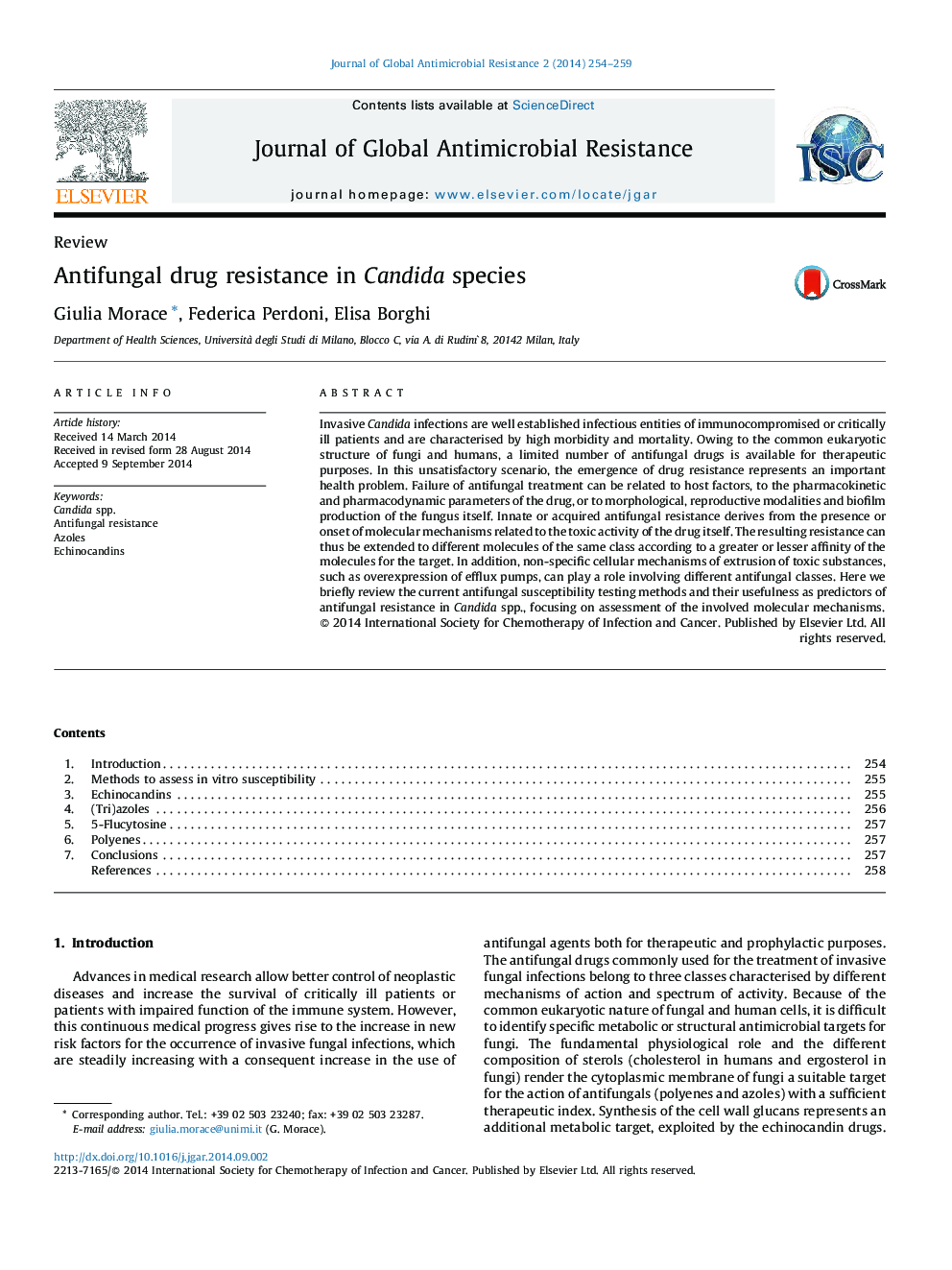| Article ID | Journal | Published Year | Pages | File Type |
|---|---|---|---|---|
| 10169936 | Journal of Global Antimicrobial Resistance | 2014 | 6 Pages |
Abstract
Invasive Candida infections are well established infectious entities of immunocompromised or critically ill patients and are characterised by high morbidity and mortality. Owing to the common eukaryotic structure of fungi and humans, a limited number of antifungal drugs is available for therapeutic purposes. In this unsatisfactory scenario, the emergence of drug resistance represents an important health problem. Failure of antifungal treatment can be related to host factors, to the pharmacokinetic and pharmacodynamic parameters of the drug, or to morphological, reproductive modalities and biofilm production of the fungus itself. Innate or acquired antifungal resistance derives from the presence or onset of molecular mechanisms related to the toxic activity of the drug itself. The resulting resistance can thus be extended to different molecules of the same class according to a greater or lesser affinity of the molecules for the target. In addition, non-specific cellular mechanisms of extrusion of toxic substances, such as overexpression of efflux pumps, can play a role involving different antifungal classes. Here we briefly review the current antifungal susceptibility testing methods and their usefulness as predictors of antifungal resistance in Candida spp., focusing on assessment of the involved molecular mechanisms.
Related Topics
Life Sciences
Immunology and Microbiology
Applied Microbiology and Biotechnology
Authors
Giulia Morace, Federica Perdoni, Elisa Borghi,
